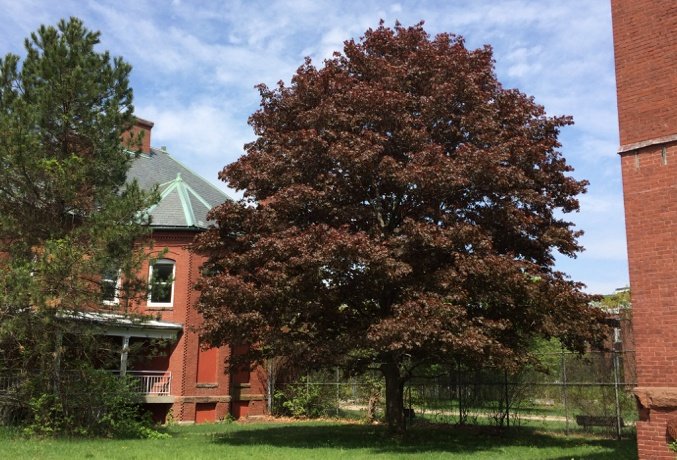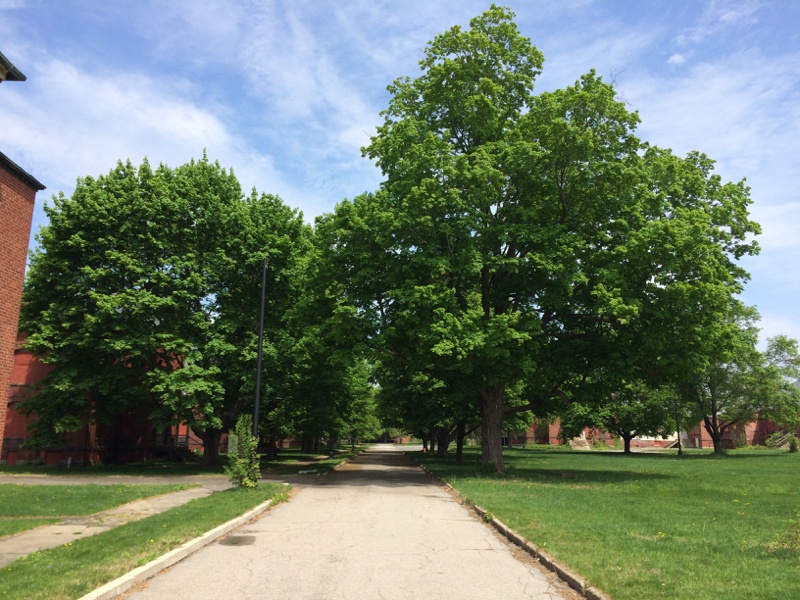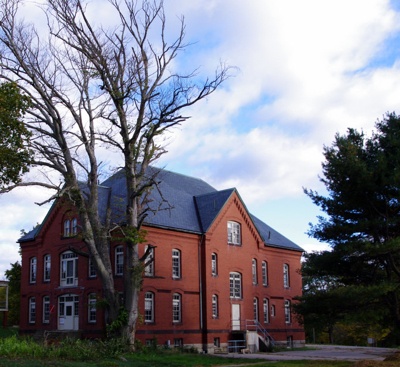There are few places in the United States with historical landscapes as rich and diversified as New England. Over the centuries since Europeans first set foot in the New World, the landscape has changed dramatically – from the pre-European open woodlands carefully maintained by the Native Americans to nurture biodiversity for food and shelter, to the thousands of miles of stonewalls and variety of cultivation of the early European settlers, to the recreational and residential landscapes of a growing middle and leisure class.
Today, virtually every New England community has landscapes connected to the past. Old farms from the 18th and 19th centuries, with their meadows, orchards, walls, and shade trees. Estates and facilities from the late 1800s featuring elegant drives and walkways, stately trees, and colorful gardens -- all elaborately designed to showcase the prosperity of the new industrial era.
With increasing environmental awareness there has also come a growing interest in preserving and conserving natural resources and landscapes. Wait a minute, you’re thinking, preserving and conserving? What’s the difference? The short answer is, plenty.
Preservation is the process of keeping something that “is” as it is. In other words, taking a hands-off approach and not changing a thing, but keeping it as intact as possible so it can endure.
Conservation is a strategy that utilizes resources in such a way that will enable them to regenerate or replenish over time. A good example might be selective timber harvesting that preserves a forest and encourages growth by carefully cutting only certain trees within a specified area, as opposed to clear-cutting all the trees and leaving a heavily disturbed landscape devoid of trees. On a smaller scale, it may involve closely considering the trees on a building site that may need selective removal or trimming to enable construction or renovation, as discussed in this video about the conservation of trees in the Medfield State Hospital restoration & conservation project.
Reading the landscape
If you have the privilege of owning or working with a parcel of land with some natural or manmade historical value and are interested in preserving or conserving it in some way, it’s important to carefully read the landscape. By this I mean both literally and figuratively reading it – spending some time looking at its physical features and attributes as well as reading up on the existing environment, horticulture, and architecture to be better informed about the property. Armed with this kind of past and present knowledge is important for a number of reasons – it enables you to make better decisions about the property and can provide inspiration for appropriate landscape design.
For those interested in a deeper dive into reading the landscape, I highly recommend the book “Reading The Forested Landscape” by Tom Wessels.
Proper land planning is as much about preservation and conservation as it is about planning for future uses. It’s easy to get excited about all the potential in a piece of property and start making changes too quickly. With just a little more thought, you may discover existing design options and brilliant solutions that require less time, effort, and money, often yielding better results.

Crimson King Maple at the Medfield State Hospital
Improved resource management
In every landscape there exists a functioning eco-system. You may not like it or understand it – you may not know it’s even there. But it is. It’s vital to slow down, consider what’s currently there, and outline ways to preserve it before making any effort to conserve it through new design.
All landscape resources have a legacy of development over time. As soon as we touch them, we change them. We need to be mindful of how those resources are interconnected with each other as well as with the human overlay of buildings, roads, and utilities. If you are working to restore and conserve a piece of property -- as in the Medfield State Hospital project -- that includes historic buildings as well old trees original to the property, it’s important to understand their relationship and keep it intact as much as possible to conserve the entire property.
For example, at the former Medfield State Hospital featured in the video, one of the buildings had a large, leafy hardwood tree on a sunny corner. That tree was clearly planted or kept there to provide shade for the building. Unfortunately, in this particular case the tree is dead and will need to be removed. However, for sake of argument, let’s say you’re the project manager in this example and the tree is still alive. If you were to remove it, you’d not only be eliminating its function in the landscape as a shade tree, you’d be removing a piece of the landscape’s history. Image source: Don Kelloway from Flickr.
In a similar sense, the landscape is more than just the features you can see. As I mentioned earlier, each landscape has its own eco-system. Above ground are the trees and other plants, but below ground is the vibrant bio-system of soil and its nutrients and inhabitants such as earthworms and bacteria that support the plants above ground. It is equally important to preserve and conserve the soil as much as the trees – both are vital to the health and value of the land:
Trees offer a cooling shade canopy, air space, soil-anchoring root mass, insect and bird habitat and a horticultural accent to the land, buildings, and travel ways that might occupy it.
Soil is the web of life that is easily destroyed by human and vehicular traffic, material staging, and construction waste. Soil is a lot more fragile than you might think. It has evolved over centuries and cannot be repaired after being damaged by wear or abuse -- once compacted by heavy equipment, it cannot be un-compacted. That’s why every effort must be made to preserve or at least conserve the soil in a legacy landscape project.

Tree Lined Roadway at the Medfield State Hospital
In the Medfield State Hospital project, we are restoring a flood plain on the Charles River that was damaged by human interaction over a period of one hundred years. What’s truly eye-opening and deeply heartening about this project is that, with proper planning, careful resource management and restoration, and knowledge of the interaction of soil, plants, and water, the flood plain is already functioning properly again. The resiliency of the landscape and eco-system is amazing. With a little love and attention, the flood plain is once again containing and filtering water, just as nature intended.







Leave a comment